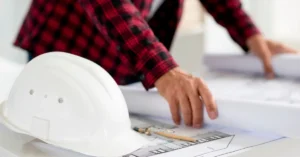Elevating Design Narratives with ChatGPT Prompts to Craft Exceptional Architectural Concepts

In the ever-evolving landscape of architecture, the ability to articulate and communicate design concepts is as crucial as the designs themselves. The narrative woven around an architectural concept provides the bridge between the abstract vision and its tangible realization. ChatGPT, with its versatile language capabilities, emerges as an invaluable tool for architects seeking to refine their design narratives. In this exploration, we’ll uncover a collection of ChatGPT prompts tailored to elevate your ability to write compelling design concepts in architecture.
Crafting Impactful Stories for Timeless Architectural Brilliance
1. Spatial Poetry: Describing Forms and Volumes
Prompt: “Compose a narrative that articulates the spatial poetry of your design. Describe the forms and volumes, conveying a sense of movement and harmony within the built environment.”
The essence of architecture lies in its spatial composition. Use this prompt to delve into the poetic qualities of your design. Translate the interplay of forms and volumes into words, capturing the fluidity, balance, and rhythm that define the spatial experience.
As one navigates through the design, a crescendo of interconnected volumes unfolds. The dance of light and shadow orchestrates a symphony of spatial experiences, guiding occupants through a journey of discovery. The forms, inspired by nature’s elegance, establish a harmonious dialogue with the surroundings, creating a sense of timeless beauty within the built environment.
2. Material Narratives: Unveiling Textures and Contexts
Prompt: “Craft a narrative that unveils the materiality of your design. Dive into the textures, colors, and contextual significance of chosen materials, elucidating their role in shaping the architectural story.”
Materials are the storytellers of architecture, each with its unique narrative. Use this prompt to articulate the tale of materials in your design. Explain the tactile qualities, the interplay of light on surfaces, and the contextual relevance that transforms mere materials into integral components of the architectural narrative.
The facade, a canvas of material expression, breathes life into the structure. Textured stone, weathered by the hands of time, speaks of resilience and endurance, echoing the historical context of the site. The interwoven hues of glass panels capture the play of daylight, casting ever-changing patterns that dance across the interior spaces.
3. Contextual Harmony: Integrating with the Surroundings
Prompt: “Compose a narrative that illustrates the contextual harmony of your design. Describe how the architecture responds to and integrates with its surroundings, establishing a symbiotic relationship with the environment.”
Architecture is not an isolated entity but a harmonious participant in its context. Use this prompt to convey how your design interacts with and enriches its surroundings. Describe the dialogue between built and natural elements, emphasizing the seamless integration that defines contextual harmony.
Amidst the urban tapestry, the design emerges as a contextual storyteller. The structure gracefully embraces the natural contours of the site, respecting the existing flora and topography. A rhythmic dance unfolds as the building engages in a visual dialogue with neighboring structures, creating a sense of continuity within the urban fabric.
4. User Experience Chronicle: Narrating Human Interaction
Prompt: “Craft a narrative chronicling the user experience within your design. Describe the journey of occupants through spaces, highlighting key moments of interaction, and expressing the intended emotional impact.”
The success of architecture lies in its ability to shape human experiences. Use this prompt to articulate the narrative of user experience. Chronicle the journey of occupants, from entry points to focal spaces, capturing the emotions and interactions that define the essence of the design.
As one steps into the atrium, a flood of natural light welcomes the occupant, setting the tone for a journey filled with discovery. The carefully orchestrated sequence of spaces unfolds, inviting moments of contemplation and social interaction. The design narrative emphasizes the creation of memorable experiences, where each architectural element contributes to the overall tapestry of emotions.
5. Sustainable Storytelling: Conveying Environmental Responsibility
Prompt: “Compose a narrative that conveys the sustainable ethos of your design. Describe the eco-friendly features, energy-efficient strategies, and the overall commitment to environmental responsibility embedded in the architectural concept.”
In an era of heightened environmental awareness, sustainable design is a narrative of paramount importance. Use this prompt to express the sustainable features of your design, highlighting the eco-friendly strategies and emphasizing the commitment to environmental responsibility.
The architectural narrative unfolds as a testament to sustainability. Rooftop gardens, adorned with native vegetation, provide a natural insulation layer, reducing energy consumption. Photovoltaic panels, seamlessly integrated into the design, harness the power of the sun, underscoring the commitment to renewable energy sources. The narrative champions a sustainable future, where design becomes a steward of the environment.
6. Cultural Resonance: Telling Stories of Identity and Heritage
Prompt: “Craft a narrative that delves into the cultural resonance of your design. Describe how the architecture reflects the identity and heritage of its context, weaving a story that honors cultural narratives.”
Architecture has the power to be a cultural storyteller, preserving and celebrating the identity of a place. Use this prompt to narrate how your design becomes a reflection of cultural identity, paying homage to heritage and enriching the architectural story with cultural nuances.
The design narrative is steeped in the cultural tapestry of the locale. Ornate patterns, reminiscent of traditional craftsmanship, adorn the facade, serving as a homage to the rich artistic heritage of the community. The spatial organization echoes the cultural rituals, creating a harmonious connection between the architectural form and the traditions that inspire it.
Conclusion: Elevating Architectural Narratives with ChatGPT
In the symphony of architectural creation, the role of narrative cannot be understated. ChatGPT, with its ability to understand and generate human-like text, serves as a formidable ally in articulating design concepts. The prompts provided here are but a glimpse into the vast potential of ChatGPT to elevate your architectural narratives.
As you embark on the journey of design exploration, let ChatGPT be your guide in translating the language of architecture into a narrative that captivates, informs, and inspires. The stories you weave around your designs are not mere descriptions; they are invitations to experience the beauty, functionality, and cultural richness embedded in every architectural creation. Through ChatGPT, your design concepts become eloquent tales that resonate with clients, collaborators, and the world at large. Elevate your architectural storytelling, and may your narratives be as compelling as the spaces they describe.
If you’re interested in learning more about architecture firms in Europe, check out this comprehensive list of the top 50 firms compiled by Archgyan. From innovative startups to long-established industry leaders, this list has it all. Take a look and discover some of the most inspiring and influential architecture firms in Europe today.
If you’re interested in architecture and want to learn more about this amazing field, subscribe to our podcast on youtube
For more SketchUp tutorials, head to https://www.sketchupguru.com













